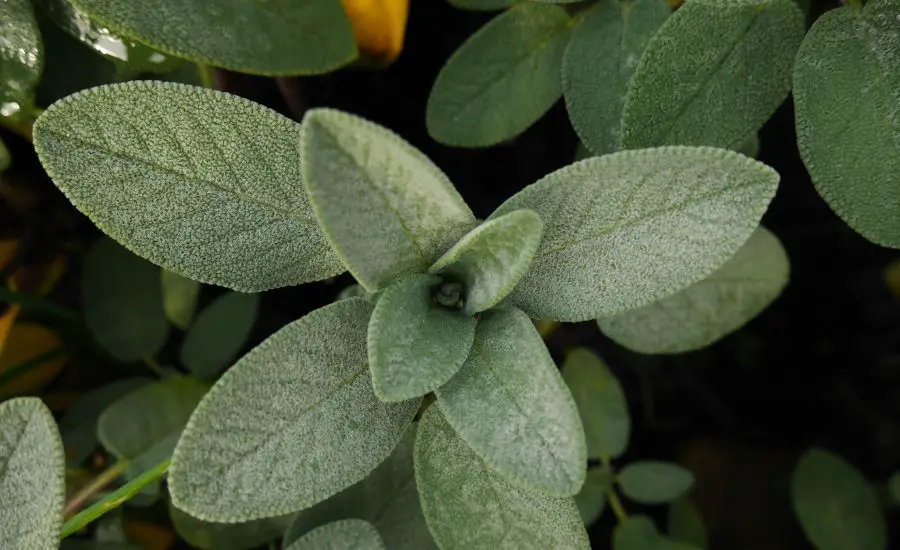Propagating sage from cuttings is a great way to propagate this herb and add it to your garden. Sage is a versatile herb that has a variety of culinary and medicinal uses. It’s easy to grow and care for, making it a popular choice for gardeners of all levels. In this article, we’ll take a closer look at how to grow sage from cuttings.
Garden sage leaves and sage seeds are staples in many cultures for thousands of years, prized for their distinctive aroma, flavor, and medicinal properties.
Whether you’re a fan of its savory flavor in stuffing or as a seasoning for meats, or you use it for its medicinal benefits such as boosting memory and aiding digestion, sage is a wonderful herb to have on hand.
Fortunately, growing from cuttings without sage seeds is a simple and rewarding process that can yield a bountiful harvest of this versatile herb.
Not only is it easy to propagate sage from cuttings and create your own herbs, but it’s also a cost-effective way to add more plants to your garden without having to purchase new seedlings.
Whether you’re an experienced gardener or just starting out, growing from cuttings without sage seeds is a great way to add a touch of green to your sage herb garden and enjoy the many benefits of this amazing plant. So, let’s get started and learn how to create your own herb garden with fresh sage leaves.

Contents
Getting started with a sage herb garden
To get started with growing without sage seeds, you’ll need a few basic supplies. Here’s what you’ll need:
- Sage plant
- Pruning shears
- Rooting hormone
- Potting soil
- Pots
- Watering can
- Fertilizer
Now let’s take a closer look at each of these items.

Plant sage
The first thing you’ll need is a sage plant. You can buy a sage plant at a nursery or garden center, or you can take a cutting from an existing sage plant.
If you’re interested in growing sage indoors, propagating sage plant from sage cuttings is a great place to start.
For the propagating sage, you need to cut a piece of stem from an established plant.
Make sure to cut the stem just below a leaf node, as this is where the new roots will grow.
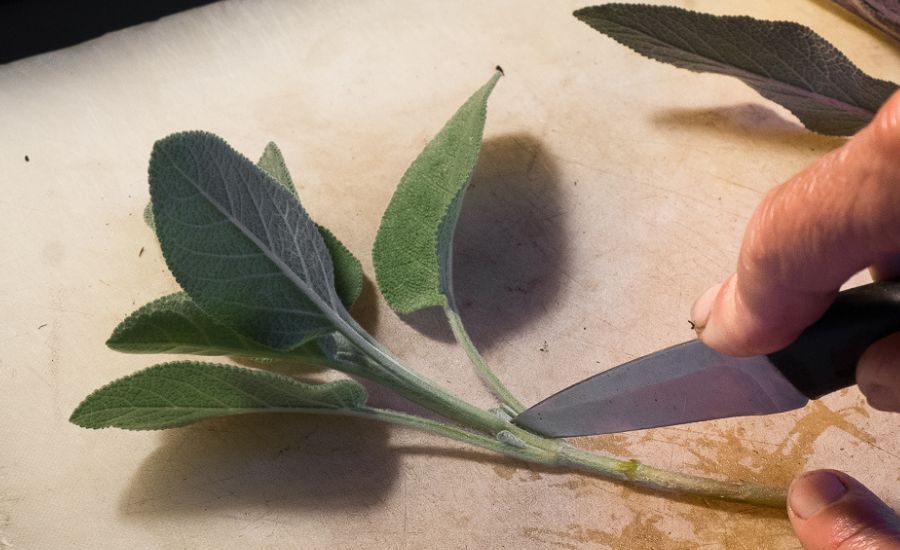
Pruning shears and potting soil
To take a cutting from a sage plant, you’ll need a pair of pruning shears. Make sure they are clean and sharp before using them.
Potting soil is a mix of organic materials that provide nutrients and drainage for plants. Make sure to choose high-quality soil that is suitable for herbs.
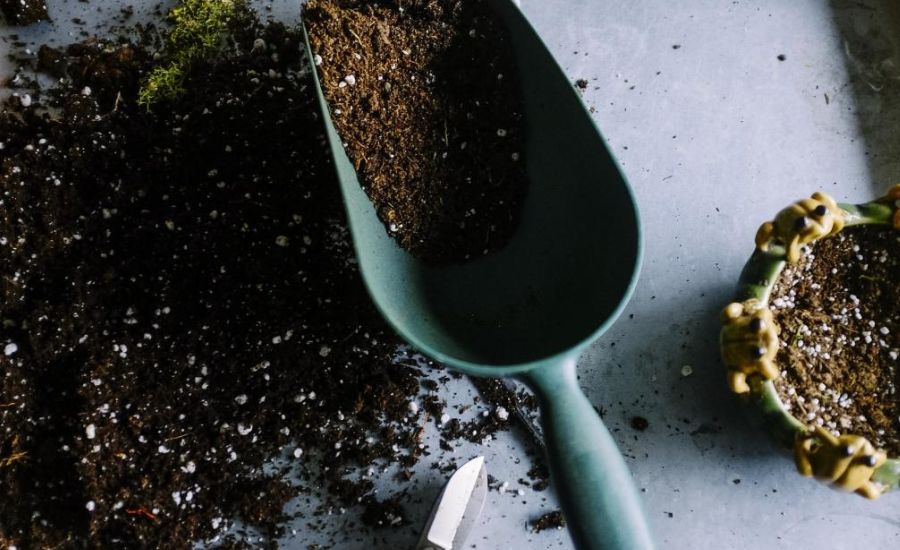
Rooting hormone
The hormone is a powder or liquid that helps stimulate root growth. It’s not necessary, but it can increase your chances of success when growing sage from cuttings. Dip the bottom of the cutting in rooting hormone and plant sage in a pot filled with moist potting soil.
Sage cuttings require plenty of sunlight, so make sure to place the pot in an area that receives full sun.
Extremely hot weather is bad for your sage herb garden.
Water the cutting regularly, making sure the soil stays moist but not too wet, as sage can be susceptible to rot.
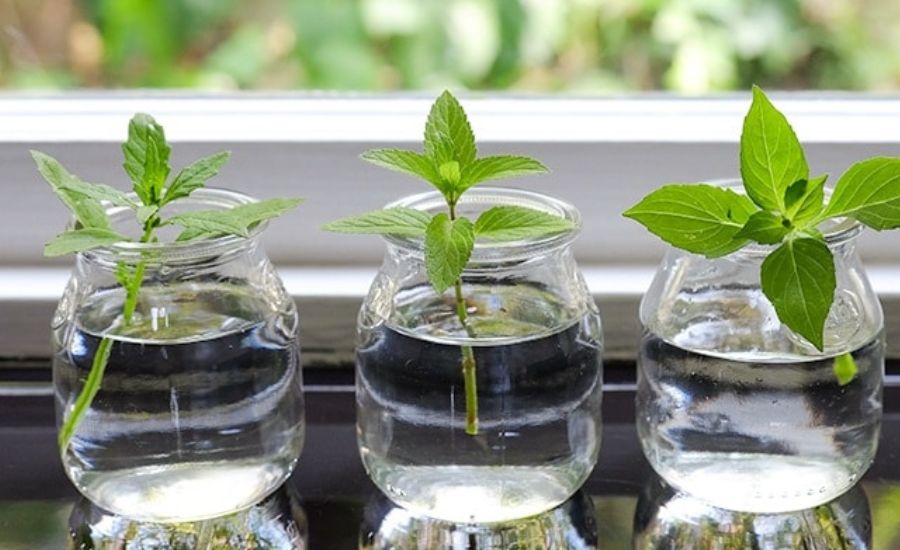
Pots
You’ll need pots to plant your sage cuttings in. Choose a pot that is the appropriate size for the cutting and has drainage holes.
Within two to three weeks, you should start to see tiny roots growing from the stem.
Once the new sage plant has established a strong root system, it can be transplanted into a larger pot or into your garden. It typically takes six to eight weeks for a sage cutting to grow into a young plant, ready to be transplanted.
It’s important to note that sage has woody stems, which can make rooting more difficult. However, with proper care and attention, you can successfully propagate sage from cuttings and enjoy free plants for years to come.
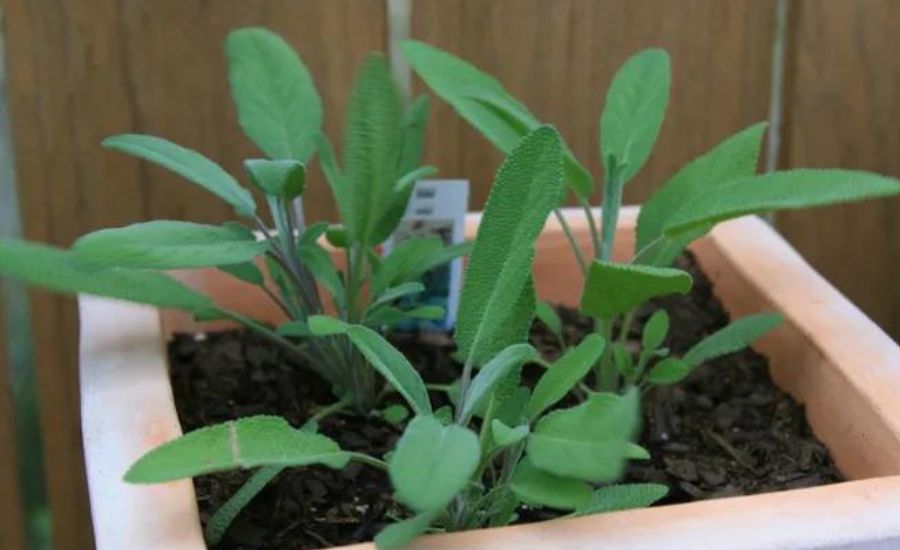
Watering can and fertilizer
Growing sage requires a few essential tools and techniques, and a watering can and fertilizer are two of them. These tools ensure that your sage plant is healthy, hydrated, and nourished, so it can thrive and produce a bountiful harvest.
A watering can with a fine spray nozzle is ideal for watering sage cuttings. The fine spray allows for gentle watering, preventing the cuttings from getting disturbed or displaced.
When selecting a watering can, consider its capacity and material.
Fertilizer is a crucial nutrient source for sage plants. It provides essential minerals and elements that the plant needs to grow, develop, and produce aromatic leaves. When selecting a fertilizer for sage, it is essential to choose a product specifically formulated for herbs. This ensures that the fertilizer contains the right balance of nutrients that herbs need.
Fertilizer is used to provide additional nutrients to the sage plant as it grows. Choose a fertilizer that is specifically formulated for herbs.

Taking cuttings
Once you have all your supplies, it’s time to take the cuttings. Here’s how to do it:
- Select a healthy plant with no signs of disease or pest infestation.
- Use clean, sharp pruning shears to take a 4-6 inch cutting from a softwood stem.
- Use rooting hormone.
- Place the cutting in a pot filled with moist soil.
- Gently press the soil around the cutting to hold it in place.
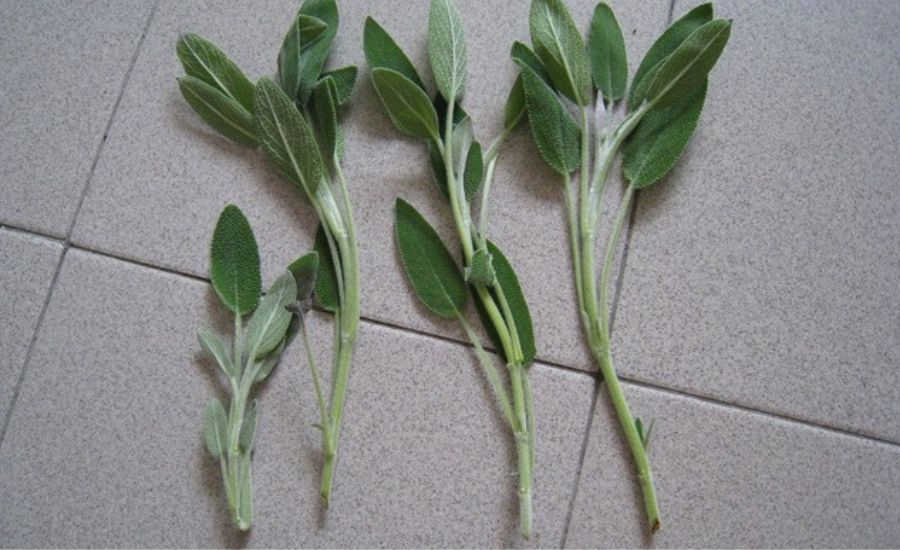
Care and maintenance
Now that you have planted your cuttings, it’s important to care for them properly. Here are some tips for caring for your sage plants:
- Water the cuttings regularly to keep the soil moist but not waterlogged.
- Place the pots in a sunny location, preferably with at least six hours of direct sunlight per day.
- Fertilize the sage plants once a month with a fertilizer that is specifically formulated for herbs.
- Prune the sage plants regularly to encourage bushy growth and prevent them from becoming too leggy.
- Watch for signs of pests or diseases, and treat them promptly if you notice any issues.
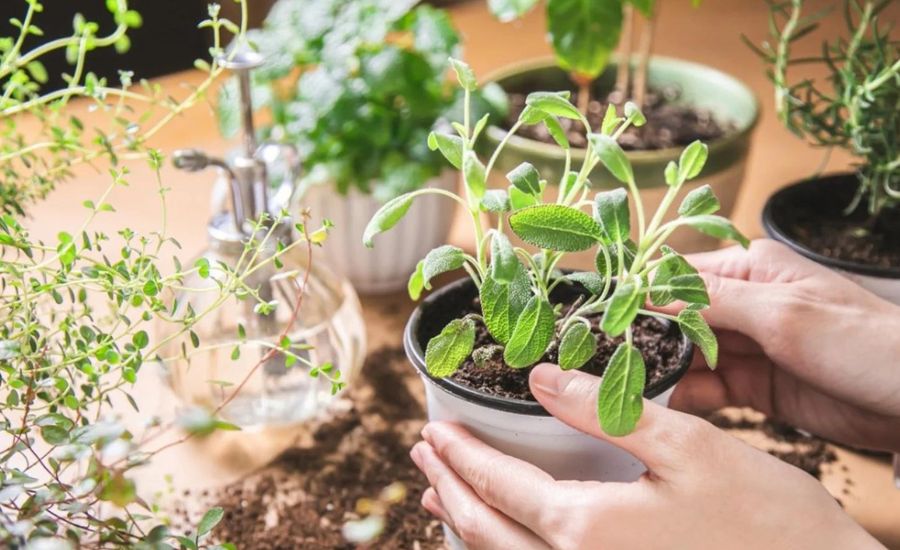
Transplanting sage seedlings
Once your cuttings have developed a strong root system and are growing well, it’s time to transplant them into larger pots or into your garden. Here’s how to do it:
- Choose a pot or location in your garden that gets at least six hours of direct sunlight per day.
- If transplanting into a pot, select a pot that is at least 8-10 inches in diameter with drainage holes.
- Fill with well-draining soil that has been enriched with compost or fertilizer.
- Carefully remove the sage plant from its original pot, being careful not to damage the roots.
- Place the plant and fill in around it with soil, making sure the soil is level and the plant is at the same depth as it was in its original pot.
- Water the plant thoroughly, making sure the soil is moist but not waterlogged.
If you already have an established sage plant, you can propagate new sage babies by taking cuttings from the plant.
Make sure to take cuttings from the plant during the growing season, as this is when sage grows the fastest.
Choose stems that are healthy and have no signs of disease or pest damage.
You can also consider companion planting with other plants that can benefit from sage’s natural insect-repelling properties, such as tomatoes, broccoli, and cabbage.
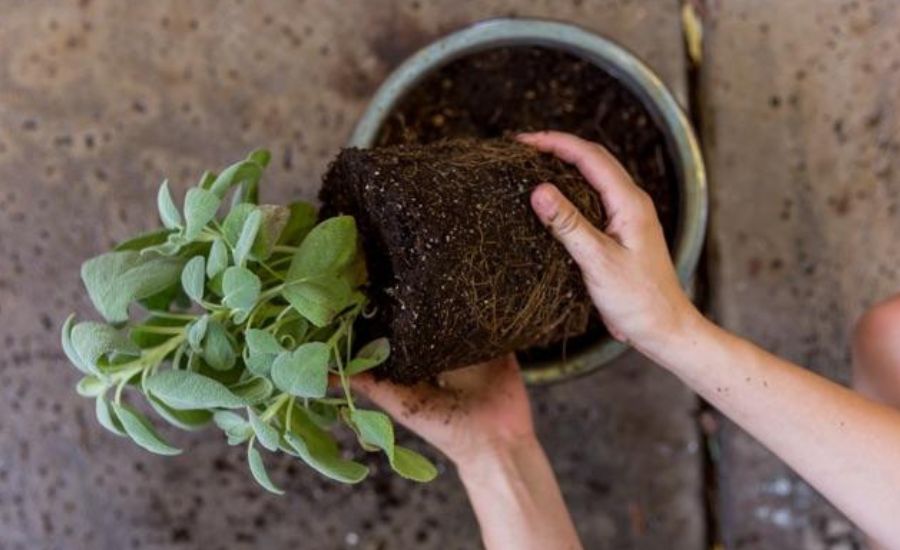
Harvesting sage
Once your sage plant is established and growing well, you can start harvesting the leaves for culinary or medicinal use. Here’s how to do it:
- Wait until the plant has reached at least 6-8 inches tall before harvesting any leaves, do not harvest more than a third.
- Choose leaves that are healthy and free from disease or pest damage.
- Harvest the leaves in the morning, after the dew has dried but before the heat of the day sets in.
- Cut the leaves with clean, sharp scissors or pruning shears, making sure to leave some leaves on the plant to allow for continued growth.
- Rinse the leaves under cool water and pat dry with a paper towel.
- Use the leaves immediately, or store them in an airtight container in the refrigerator for up to a week.
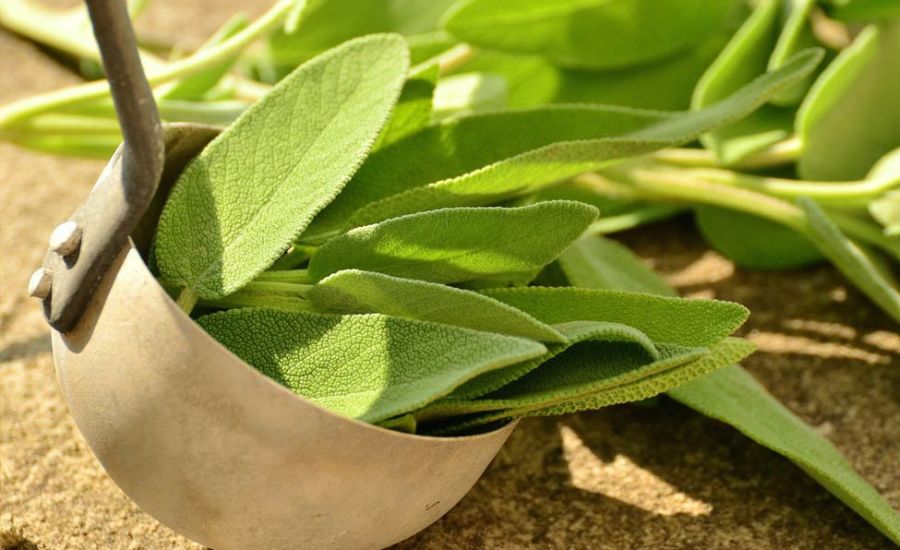
Common growing sage problems
While sage is generally an easy plant to grow, there are some common problems you may encounter. Here are a few of the most common issues and how to address them:
Powdery Mildew: Powdery mildew is a fungal disease that appears as a white, powdery coating on the leaves.
To prevent powdery mildew, make sure your sage plant is in a well-ventilated area and not overcrowded. If powdery mildew does appear, treat it with a fungicide or a homemade solution of water and baking soda.
Root Rot: rot is a fungal disease that occurs when the roots of the plant are constantly wet. To prevent rot, make sure your sage plant is in well-draining soil and not overwatered.
If you notice signs of root rot, such as yellowing leaves or a foul smell, remove the plant from the soil and cut off any affected roots before replanting in fresh soil.
Pest Infestations: Sage can be susceptible to pests such as aphids, spider mites, and white flies. To prevent infestations, keep the plant clean and well-pruned.
If you notice signs of an infestation, treat it with a pesticide or a homemade solution of water and dish soap.
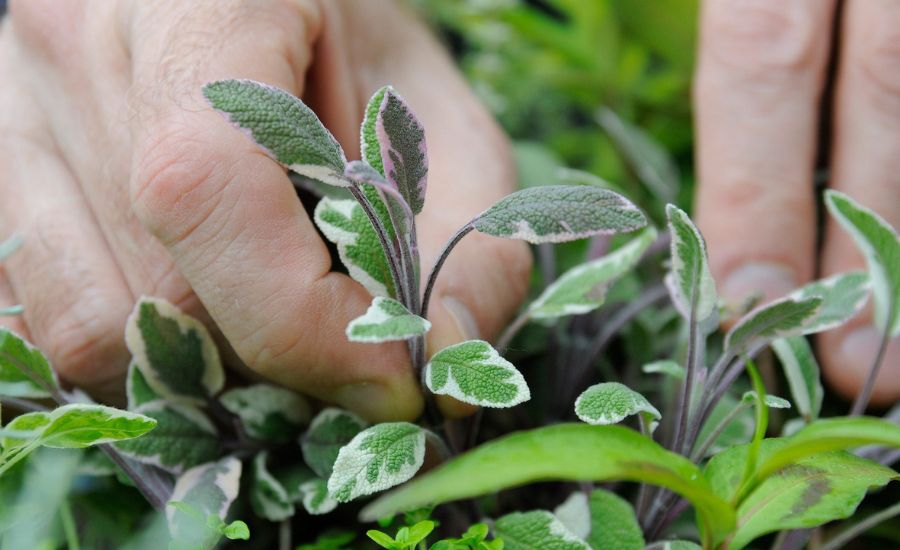
FAQ
If you have some questions left, we’re glad to answer them.
Is sage easy to grow from cuttings?
Sage is relatively easy to grow from cuttings. In fact, it’s one of the easiest herbs to propagate through cuttings.
Can I grow sage in water?
Sage can be propagated in water as well.
How long does sage take to grow from cuttings?
Sage usually takes 2-3 weeks to form roots and another 4-6 weeks to establish a strong root system before they can be transplanted to their final location.
However, it’s important to note that the exact time it takes for cuttings to grow can vary based on factors such as temperature, humidity, and the overall health of the plant.
Conclusion
Growing sage from cuttings is a simple and rewarding process that can yield a bountiful harvest of this versatile herb.
Growing sage from cuttings is a great way to add an easy-to-grow, flavorful herb to your garden or indoor herb collection. Not only is sage a tasty addition to many dishes, but it also has a long list of health benefits, making it a valuable addition to any garden.
By following the simple steps outlined in this article, you can successfully grow sage from cuttings and enjoy the many benefits of this versatile plant.
Remember to start with healthy cuttings, provide the right growing conditions, and take care to prevent and address any common problems that may arise.
With a bit of patience and effort, you can watch your cuttings grow into healthy, thriving plants that will provide you with a steady supply of delicious fresh sage leaves for years to come.
So, whether you’re a beginner or an experienced gardener, why not give growing sage from cuttings a try? With a bit of effort, you’ll be rewarded with a flavorful and beneficial herb that’s sure to become a staple in your kitchen and garden.

